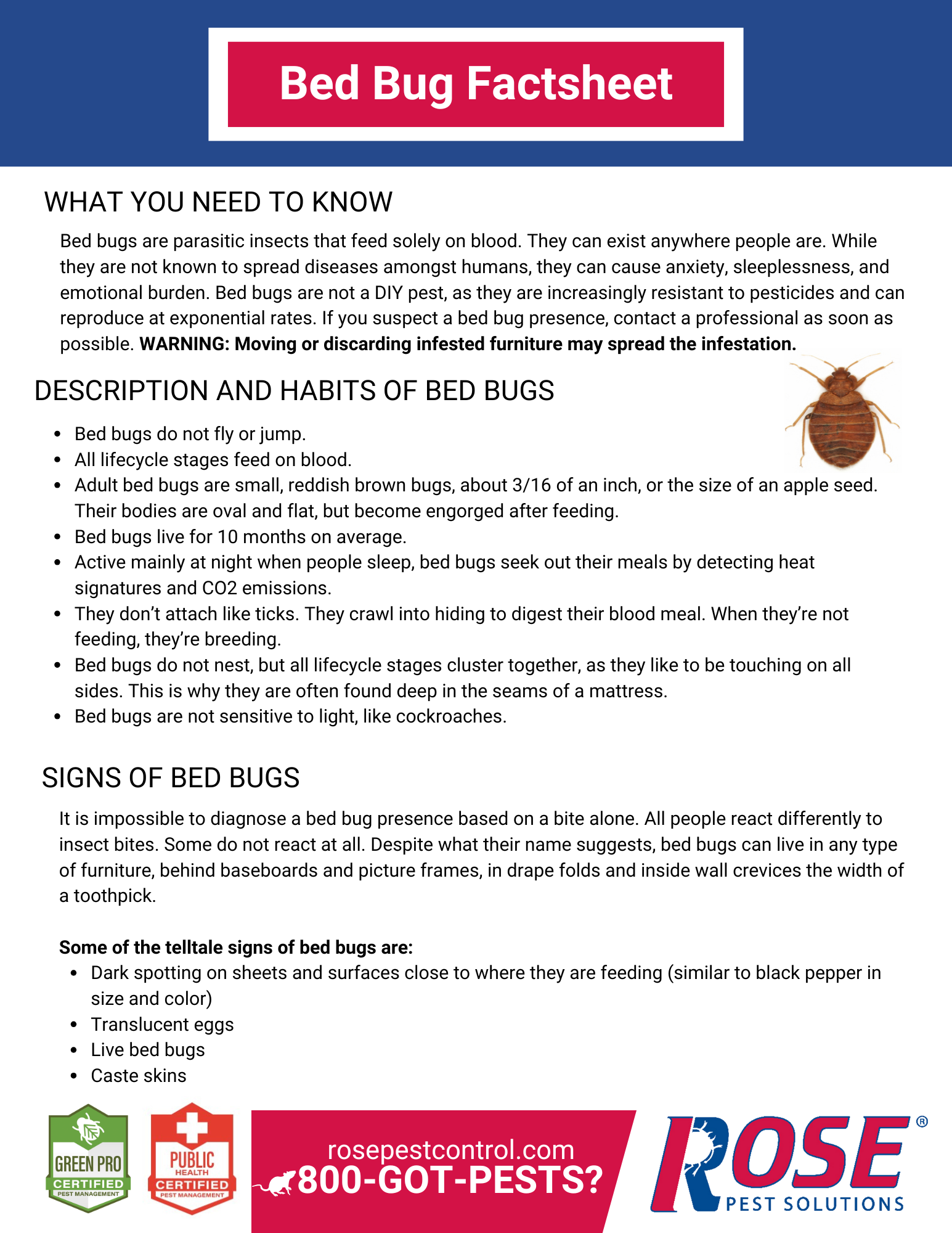5 Easy Facts About Bed Bug Services Shown
Table of ContentsNot known Factual Statements About Bed Bug Services How Bed Bug Services can Save You Time, Stress, and Money.Examine This Report on Bed Bug ServicesSome Known Facts About Bed Bug Services.
An expert-conducted bed bug inspection is far more detailed than a casual glance and requires specialized knowledge. Bed bugs are small, elusive, and adept at hiding that hide in narrow spaces, corners, and upholstery. Because of their secretive nature, a thorough inspection is essential to accurately locate and quantify infestations. Professional inspectors use a combination of tools, procedures, and knowledge to detect bed bugs accurately, reducing the risk of escalation.The first step in a proper inspection involves understanding bed bug biology and behavior. Bed bugs belong to the order Hemiptera and undergo a life cycle that includes eggs, nymph stages, and adulthood. Adults are around five millimeters long, flat, reddish-brown, and wingless with slender legs and antennae. Their segmented proboscis allows them to pierce the skin and feed on blood, often causing red, itchy welts on hosts. Knowing these traits guides professionals in locating infestations.
Early detection is vital for effective management. Professionals search for telltale signs such as dark spots of fecal matter, molted skins, and eggs (Bed Bug Services). Even one female can produce dozens of eggs quickly, potentially causing full-blown infestations. Evidence of shed exoskeletons or leftover eggs shows that the infestation is current and requires prompt inspection
Preparing for an inspection demands meticulous preparation. Inspectors often suggest tidying up spaces to allow full access, which improves access to furniture and baseboards. Bedding and linens may be cleaned thoroughly and sealed in plastic bags, and then kept in plastic bags to maintain cleanliness. Wall decor, mirrors, and pictures explanation should be taken down to check hiding places. Vacuuming furniture and floors can remove loose pests, and vacuum bags should be emptied in a secure location.
9 Easy Facts About Bed Bug Services Explained
The inspection itself is systematic and thorough. Inspectors examine mattresses, bed frames, and headboards, looking closely at creases, joints, and folds. Upholstered furniture, including seating furniture, is inspected thoroughly, including underneath and inside cushions. Baseboards, moldings, the edges of wall-to-wall carpeting, electrical outlets, closets, and storage areas receive detailed attention, as these can be frequent hiding places.
Specialized tools help inspectors find hidden pests. Flashlights, magnifying lenses, multi-tools, and mirrors allow examination of tight spaces. Monitoring devices like interceptor traps or sticky pads allow ongoing monitoring of pest activity. Some link companies bring in canine teams, which accurately identify active infestations, distinguishing them from residual signs.

Meticulous documentation plays a critical role. Inspectors record the locations of evidence, severity of infestation, and treatment recommendations. This ensures accountability and offers proof of inspection. Residents are often instructed to preserve evidence for accuracy, as this prevents loss of critical information.
After inspection, a monitoring plan may be put in place to confirm the presence of bed bugs and track activity. Continuous monitoring detects reinfestation, and asking residents about bites and sightings supplements physical inspection. Cooperation from residents supports the inspection process.
Bed Bug Services for Beginners

Professional inspections offer a click for source higher level of accuracy than DIY attempts. Trained inspectors spot subtle signs overlooked by untrained eyes, ensure the correct pest is addressed, and give peace of mind.
Bed bug inspections are particularly important in high-risk environments. Inspectors assess all connected areas to confirm complete assessment (Bed Bug Services). This supports comprehensive control
In summary, a professional bed bug inspection includes identifying the pest, readying the environment, inspecting meticulously, employing tools, maintaining records, and ongoing monitoring. Each step supports early detection, informs treatment, and reduces future risk.
3 Easy Facts About Bed Bug Services Explained
